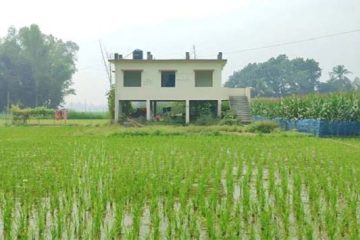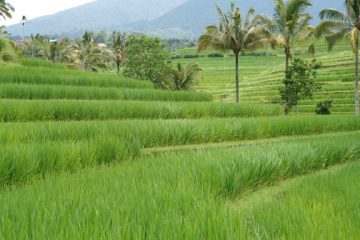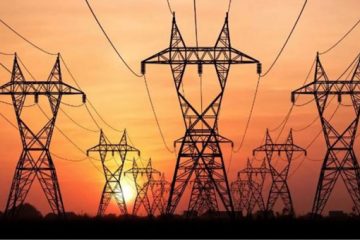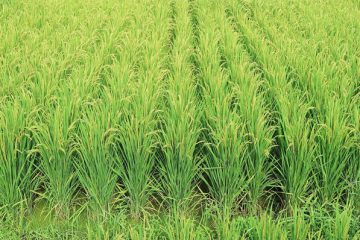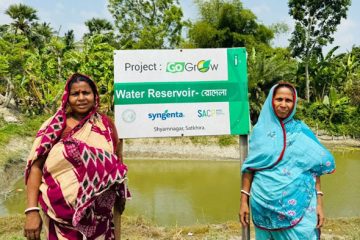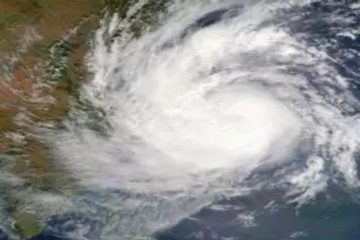57km of the river encroached by locals
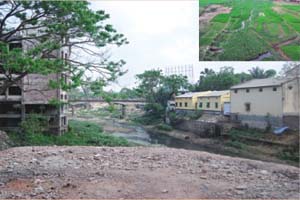 A huge chunk of the Karatoa river has allegedly been occupied by local people at several important areas in Gaibandha and Bogra districts, according to Bangladesh Water Development Board and the Department of Environment.
A huge chunk of the Karatoa river has allegedly been occupied by local people at several important areas in Gaibandha and Bogra districts, according to Bangladesh Water Development Board and the Department of Environment.
Sources at BWDB Bogra circle office say about 57 kilometres of the 86.75 km channel from Khalisha of Gobindaganj upazila in Gaibandha to Khanpur of Sherpur upazila in Bogra has already been occupied for cultivation.
The sources say people have used forged land documents to occupy the huge land on both banks of the river.
They add the river has lost its main channel from Khalisha to Khanpur about 21 years ago as the flow of water was regulated. The BWDB constructed a three-vent regulator in Khalisha area in 1989 to control the flow of the river.
BWDB Sub-Assistant Engineer AKM Najmul Hassan in Gaibandha told The Daily Star over phone that at least 20 km out of 25 km of the river in the district has almost died. “Locals grabbed the riverbed from Khalisha into 15 km downstream for cultivation and other purposes,” he added.
The Karatoa is a very old river mentioned even in the Vedic literature and stood as the mark of limit of the Aryan expansion to the east.
M Inamul Haque mentioned in his book “Water Resources Management in Bangladesh” that from the Rennell’s Map of 1779 it appears that the Karatoa originated from the foothills of the Himalayas in Darjeeling of West Bengal and joined the Atrai river in the plains.
“Land grabbers have occupied huge valuable land on both sides of the river from Matidali to Madla in Bogra town to construct commercial and residential buildings,” said AKM Momtaz Uddin, executive engineer, BWDB, Bogra.
He said a development project worth Tk 136 crore was initiated to improve the Karatoa channel and other infrastructure in 2006. However, that project has yet to start, he added.
Raj Kumar Behani, 60, a well-known businessman in Bogra, has constructed his house and business centre allegedly occupying 10 decimals of land on the east bank of the river at Chalopara.
Contacted, Raj Kumar denied the allegation and said he constructed the buildings on his paternal land.
The Diabetic Association, Bogra unit, also allegedly grabbed 6 decimals of river land on the west bank and constructed a multi-storey hospital building about 14 years ago.
Amzad Hossain Tazma, president of the unit, said the organisation constructed the building on a written permission of the district administration in 1997.
Farmer Md Ishake Ali, 45, admitted that he has been growing paddy in the riverbed for 12 years. He claimed he has some paternal land in the riverbed like other people of Sujabad village in Shahjahanpur upazila of Bogra.
Md Nazmul Haque, director, Department of Environment, Rajshahi Division, said huge land has been occupied on both banks of the river.
“We are gathering information about the grabbing on both sides of the river for necessary action to improve the situation,” he added.
Image caption: Homes and factories are built on the Karatoa at Chelopara of Bogra town significantly narrowing down the river. Inset, farmers grow crops on the Karatoa during dry season in Sherpur upazila of Bogra as the river has almost no water flow then. Photo: Hasibur Rahman Bilu
Courtesy of The Daily Star

